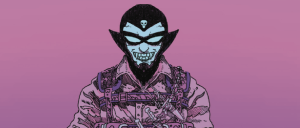October carries with it a peculiar tension. The air cools, light fades earlier each day, and familiar places begin to feel slightly estranged from themselves as Halloween approaches. For instance, a street you’ve walked a hundred times suddenly seems darker. Or maybe the creak of a settling house echoes a little longer than expected. Horror thrives in these in-between spaces, where certainty slips away and the ordinary shifts toward menace. When television leans into this slow disorientation, it creates an environment that allows dread to expand, scene by scene, until the story feels less like fiction and more like an intrusion into the viewer’s own world.
Streaming platforms offer a remarkable spectrum of terror perfect for this immersive experience. By binging the right horror series, viewers can find methodical dread that builds over many hours or explosive sagas of supernatural justice. The following selections represent the pinnacle of this form, each a self-contained nightmare crafted to deliver an unforgettable binge-watching journey.
Don Mancini’s greatest achievement with the Chucky television series is its masterful tonal control. The show integrates decades of convoluted film lore, a queer coming-of-age story, and brutal slasher set pieces without ever collapsing under the weight of its own ambition. The plot centers on Jake Wheeler (Zackary Arthur), a teenager who buys a Good Guy doll in Hackensack, New Jersey, only to find himself the new owner of the infamous killer Charles Lee Ray. However, what could have been a simple victim-of-the-week formula instead becomes a surprisingly sincere character study.
Chucky weaponizes its television format to give its characters room to breathe, a luxury the films never had. As a result, Jake’s struggles with his sexuality and his budding romance feel just as central to the story as Chucky’s elaborate murder plots. Of course, Brad Dourif’s returning voice work remains the acidic heart of the franchise, dripping with menace and dark humor. Finally, by bringing back fan-favorites like Jennifer Tilly’s Tiffany Valentine, Chucky serves its loyal audience while building a story accessible and resonant enough for a new generation.
From functions as a brutal sociological experiment that uses its high-concept premise to dissect human nature. The show establishes two unyielding control variables for its test subjects. The first is the inescapable nature of the town, as every road out magically circles back, turning the place into a prison. The second is the nightly curfew, enforced by smiling creatures that hunt and kill anyone caught outdoors after sunset. These rules create a pressure-cooker environment where society itself becomes a character.
Still, the resulting conflict between the town’s two main factions is where From‘s true horror lies. The Township, led by Sheriff Boyd Stevens (Harold Perrineau), attempts to recreate the rules and order of the old world. Colony House, under the pragmatic leadership of Donna (Elizabeth Saunders), embraces a more communal form of survival. As a result, the tension between these competing ideologies is more compelling than any monster attack. Finally, Perrineau’s performance captures the immense psychological weight of trying to enforce a dead system in a new reality, making the series a fascinating study of societal collapse.
The anthology format of American Horror Story makes it a uniquely compelling binge-watching experience. That’s because, unlike serialized dramas, there is no long-term commitment. So, if a particular season’s theme, like the political horror of Cult, does not appeal to a viewer, they can simply skip to another self-contained nightmare without missing any crucial plot. This structure invites viewers to curate their own horror marathon, jumping from the haunted house mystery of Murder House to the campy witchcraft of Coven at will.
American Horror Story is held together by its over-the-top style and a brilliant repertory company of actors who return each season in new roles. Unsurprisingly, the real joy of a long-form AHS binge comes from seeing performers like Sarah Paulson, Evan Peters, and Jessica Lange transform so completely from one story to the next. They provide the crucial connective tissue that makes the entire project feel like a cohesive universe. In the end, while the quality between American Horror Story seasons is famously uneven, the sheer variety of horror on display and the thrill of the repertory cast make the show a perfect choice for viewers who crave novelty.
The true power of Penny Dreadful is its devotion to the source material of Gothic literature. First of all, the series operates as a Victorian-era crossover event, weaving characters like Victor Frankenstein (Harry Treadaway), Dorian Gray (Reeve Carney), and figures from Bram Stoker’s Dracula into a single, cohesive narrative. In addition, the show rejects modern cynicism, treating these classic monsters with a deadly seriousness that makes them genuinely terrifying. Finally, its horror is atmospheric and deeply psychological, rooted in the repressed fears and desires of its characters as they confront supernatural forces in the grimy streets of London.
While the literary world-building is impressive, Penny Dreadful is anchored by a breathtaking performance from Eva Green as the tormented Vanessa Ives. The character is a woman tormented by a demonic entity possessing her body, and Green’s fearless take on the role turns the series into a mesmerizing exploration of faith, madness, and pain.
Servant excels by creating a suffocating sense of dread within an extremely confined space. The plot is set almost entirely within a single Philadelphia brownstone, turning the house into a psychological prison for its characters. The story begins after a tragedy, with a grieving couple, Dorothy (Lauren Ambrose) and Sean (Toby Kebbell), hiring a mysterious young nanny named Leanne (Nell Tiger Free) to care for a reborn doll. When the doll inexplicably becomes a living baby, the home transforms into a battleground of paranoia, grief, and potential supernatural influence.
Executive produced by M. Night Shyamalan, Servant builds its tension slowly and methodically. The horror is rarely explicit, instead simmering through unsettling close-ups, ambiguous character motivations, and a constant feeling that something is deeply wrong. In addition, each thirty-minute episode builds the central mystery piece by agonizing piece, focusing on the unraveling sanity of its four main inhabitants.
While other anthologies rely on original stories, Channel Zero draws its inspiration from a uniquely modern source: creepypasta. Each of its four seasons adapts a different piece of viral internet folklore, from the strange pirate broadcast of “Candle Cove” to the impossible doors of “No-End House.” This premise gives the show a distinct and unsettling tone, as it taps into the specific fears of the digital age. Based on this premise, Channel Zero translates the minimalist horror of these online legends into fully realized worlds filled with surreal and unforgettable imagery.
Channel Zero is not interested in simple jump scares. Instead, it cultivates a pervasive and dreamlike unease, letting its disturbing visuals linger without explanation. The show’s greatest strength is its ability to take a simple, unnerving concept and build a character-driven story around it without losing the original tale’s frightening power. As a result, the series consistently delivers a brand of imaginative and high-concept horror that is unlike anything else on television.
Mike Flanagan’s The Fall of the House of Usher is a maximalist horror epic disguised as a family drama. The limited series uses the titular Edgar Allan Poe story as a framework to weave dozens of the author’s other poems and short stories into a single, sprawling narrative. The plot follows the Usher dynasty, a corrupt pharmaceutical family led by patriarch Roderick Usher (Bruce Greenwood), as its members are killed off one by one. A mysterious woman from the family’s past, Verna (Carla Gugino), acts as the supernatural arbiter of their gruesome, and often poetic, doom.
Unlike Flanagan’s more somber works, this series is a theatrical and vicious satire of wealth and moral decay. The horror is also grand and operatic, leaning into the gothic melodrama of its source material. Furthermore, The Fall of the House of Usher reunites a familiar troupe of actors from Flanagan’s previous projects, who are clearly enjoying the chance to portray the deliciously vile members of the Usher clan, making the series a smart and bloody saga that serves as a fitting tribute to a master of the macabre.
No other show has blended artistic beauty with visceral horror quite like Hannibal. The series chronicles the twisted psychological relationship between FBI profiler Will Graham (Hugh Dancy) and his psychiatrist, the secretly cannibalistic Hannibal Lecter (Mads Mikkelsen). Acting as a prequel to the well-known films, it explores their dark mentorship and the methodical manipulation that precedes Lecter’s capture, creating a constant and suffocating sense of dread.
Hannibal‘s aesthetic is legendary, presenting horrific crime scenes as grotesque and beautiful tableaus. Yet, the shocking violence is secondary to the show’s true source of terror: the cat-and-mouse game between its leads. In addition, Mikkelsen’s portrayal of Lecter is one of quiet, predatory grace, and watching him slowly corrupt the empathetic Will Graham is a truly horrifying spectacle to behold.
Mike Flanagan’s Midnight Mass is his most personal and arguably most profound work. The series is a slow-burning horror story set on the isolated Crockett Island, a dying fishing community. The town’s faith is powerfully reignited by the arrival of a charismatic new priest, Father Paul (Hamish Linklater), whose presence coincides with a series of inexplicable miracles. However, the show slowly reveals a terrifying evil as the true source of this divine intervention, using the vampire mythos to conduct a deep examination of faith, fanaticism, and redemption.
Midnight Mass is also defined by its long, theatrical monologues, in which characters grapple with their beliefs about life, death, and God. This deliberate focus on character and theme makes the eventual eruption of full-scale horror all the more impactful. At the center of it all is Linklater’s astounding performance, who portrays Father Paul as a tragic figure whose faith unleashes a nightmare upon the community he so desperately wants to save. It is this heartbreaking conflict that cements the series as a modern horror masterpiece.
Mike Flanagan’s “Haunting” anthology redefines modern television horror by rooting its supernatural threats in profoundly human stories of grief and loss. The first installment, The Haunting of Hill House, is fundamentally a story about familial trauma. The series expertly jumps between the Crain family’s past in a haunted mansion and their fractured present, showing how childhood events continue to manifest in their adult lives as addiction, mental illness, and denial. The ghosts are genuinely terrifying, but the show’s power comes from presenting them as inseparable from the family’s unresolved pain.
Its follow-up, The Haunting of Bly Manor, shifts the focus from family to a heartbreaking gothic romance. Where Hill House delivered visceral horror driven by trauma, Bly Manor is a slow-burn tragedy that uses its ghosts to explore the nature of memory and the weight of a broken heart. Together, the two series prove that the most effective horror is rooted in character. They deliver genuine scares without ever sacrificing emotional depth, setting a new standard for the genre.
What is your favorite horror show to binge during the Halloween season? Leave a comment below and join the conversation now in the ComicBook Forum!
The post 10 Best Horror Shows To Binge Right Now (October 2025) appeared first on ComicBook.com.




